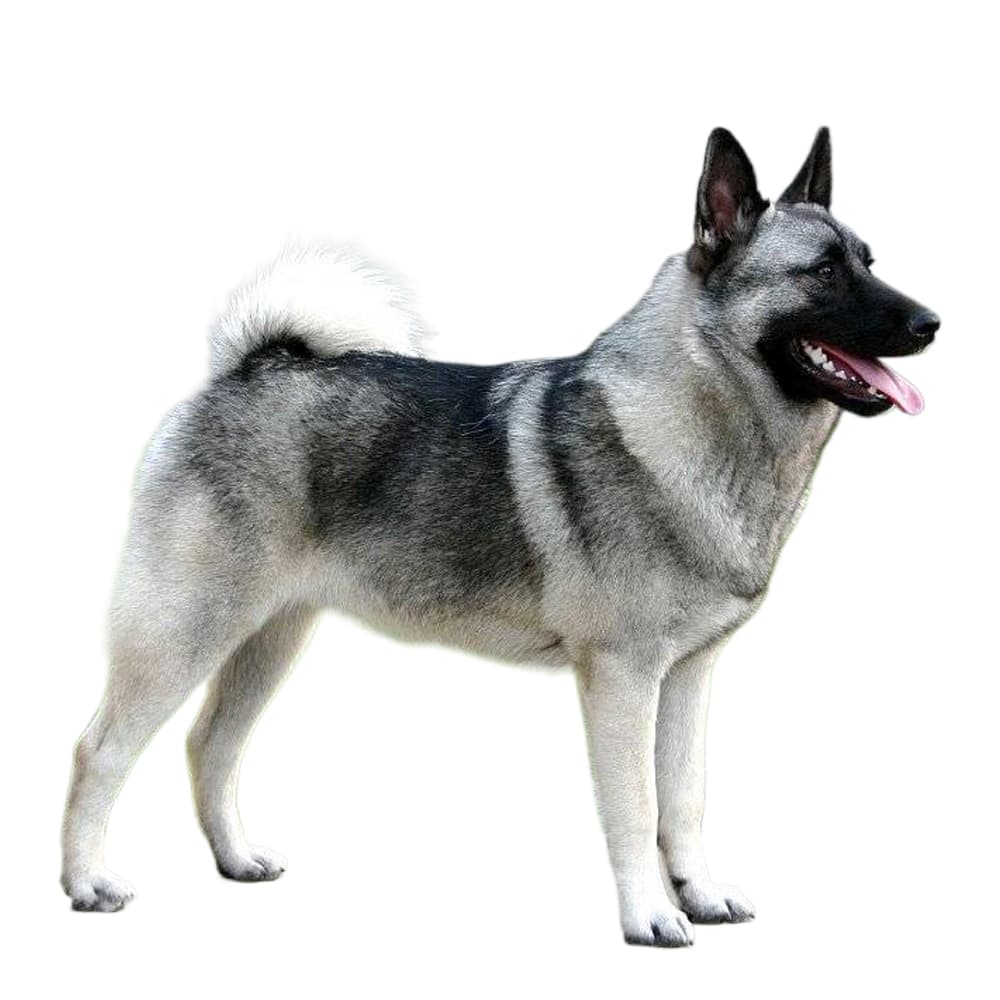Discover your dog's connection to this breed and 200+ others


Discover your dog's connection to this breed and 200+ others



The Norwegian Elkhound is a robust and hardy dog breed with a history that dates back thousands of years. The breed's origins are deeply rooted in Norway, where they were used as hunting dogs for large game, such as elk (hence the name), bear, and other wild animals.They were also shipmates of the Vikings, and remains of Norwegian Elkhounds dating back 5000 years have been found with Viking remains and weapons. The breed is known to be ancient, with archaeological evidence showing that similar dogs lived in Scandinavia since the Stone Age. Norwegian Elkhounds were not just hunting companions but were also used as guard dogs and herders.
Norwegian Elkhounds can be prone to eye conditions such as primary open angle glaucoma and progressive rod-cone degeneration. They can also be susceptible to pyotraumatic dermatitis (also known as hot spots). They may suffer from Lundehund Syndrome, hyperuricosuria, degenerative myelopathy, and chondrodysplasia.
Norwegian Elkhounds are known for their friendly and outgoing nature. They are highly intelligent and quick learners, although sometimes they can be a bit stubborn. The breed is known for being good with children and typically gets along well with other dogs. However, because of their hunting origins, they do have a prey drive and may chase after smaller animals. This breed requires plenty of physical and mental stimulation to stay happy and healthy.
A canine genetic lineage is a group of individuals or entire breeds that descended from common ancestors predating modern breed formation. Often these lineages are associated with a ‘type’ of dog with a unique historical working role and associated behaviors (e.g., herding, scent hunting, etc.).
Spitz and Sled Dogs originate in the Arctic and subarctic regions which caused them the develop adaptations to cold climates. Some of these adaptations give rise to characteristics of the lineage, most notably a dense double coat that helps with insulation. The lineage of these dogs can be followed back to ancient breeds developed by Indigenous people. These ancient breeds were used as an aid for transportation, herding, guarding, and hunting. These jobs have created dogs that are independent, intelligent and have strong work ethics as well as a sturdy body that helps them to pull sleds or go on long journeys over rough terrain.
Example breeds with ancestry from this lineage include Akita, Chow Chow, and Siberian Husky.
Norwegian Elkhounds have a unique way of tracking their quarry. Unlike most hounds who track by scent on the ground, Elkhounds track by scent in the air.
The breed has a strong voice and used to use its bark to help hunters locate them in the hunting field.
Norwegian Elkhounds were considered to be the "Dog of the Vikings." This breed is often recognized for its stamina, loyalty, and courage.
The breed was recognized by the American Kennel Club in 1930.
https://vgl.ucdavis.edu/breed/norwegian-elkhound?page=1
https://www.ukcdogs.com/norwegian-elkhound
https://www.fci.be/en/nomenclature/NORWEGIAN-ELKHOUND-GREY-242.html
https://www.hillspet.com/dog-care/dog-breeds/norwegian-elkhound
https://www.akc.org/dog-breeds/norwegian-elkhound/
Recommended by top vets with decades of experience
21 breeds
64 genetic health markers
50 genetic trait markers
